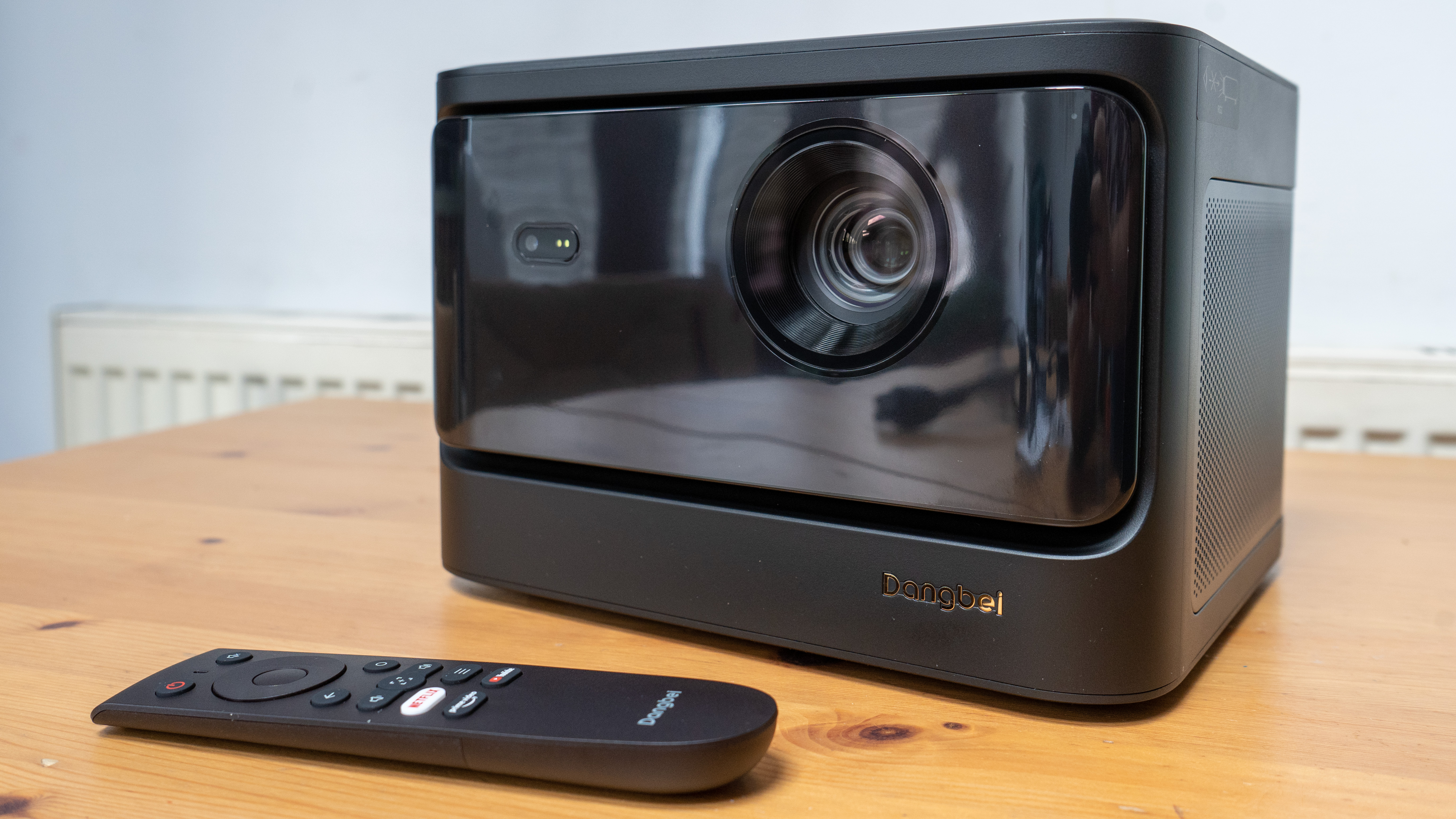
If you're asking "Dangbei, who?" then you're not from China, where the company is one of the top projector firms and a Red Dot prize winner. The Dangbei Mars I'm reviewing is the newer 1080P sibling of the company's 4K flagship laser projector, and, despite the lower native resolution, is still what the firm calls "Ultra-bright." It boasts dual 10W speakers and Dolby Digital Plus support in the box.
The Dangbei Mars is a reminder of just how far the best projectors have come since my dad would proudly load some slides to display, cautiously position the projector for fear of breaking the bulb, and roll down a screen on an extendable pole. In retrospect, there was an unreasonable amount of grumbling from the rest of the family from this glowing magic, but it was not a movie night!
Gladly times have moved on, and that now is an option. This projector is built to be put in place and set up fast, turning a white wall or, ideally, a proper screen into a cinema. Automation replaces fiddly keystone correction and focussing, which should make it more-or-less set up itself. If you've any experience of getting a projector, especially a cheap one, to produce a good image, then you'll understand just what a promise that is.
Dangbei also makes much of the built-in streaming apps, not least Netflix. In theory you can drop the cinema into any room (or the garden) with a single power supply. I decided to put it to the test.
Specification
Resolution: 1080p (4K version available)
Brightness: 2,100 ANSI lumens
Noise level: 24db
Lifetime: 30000 hours
Projection: 180-inch max
Connectivity: HDMI x 2, USB-A x2, Ethernet, S/PDIF*1, 5G Wi-Fi, Bluetooth 5
Weight: 6.59Kg
Dimensions: 246 x 209 x 173mm
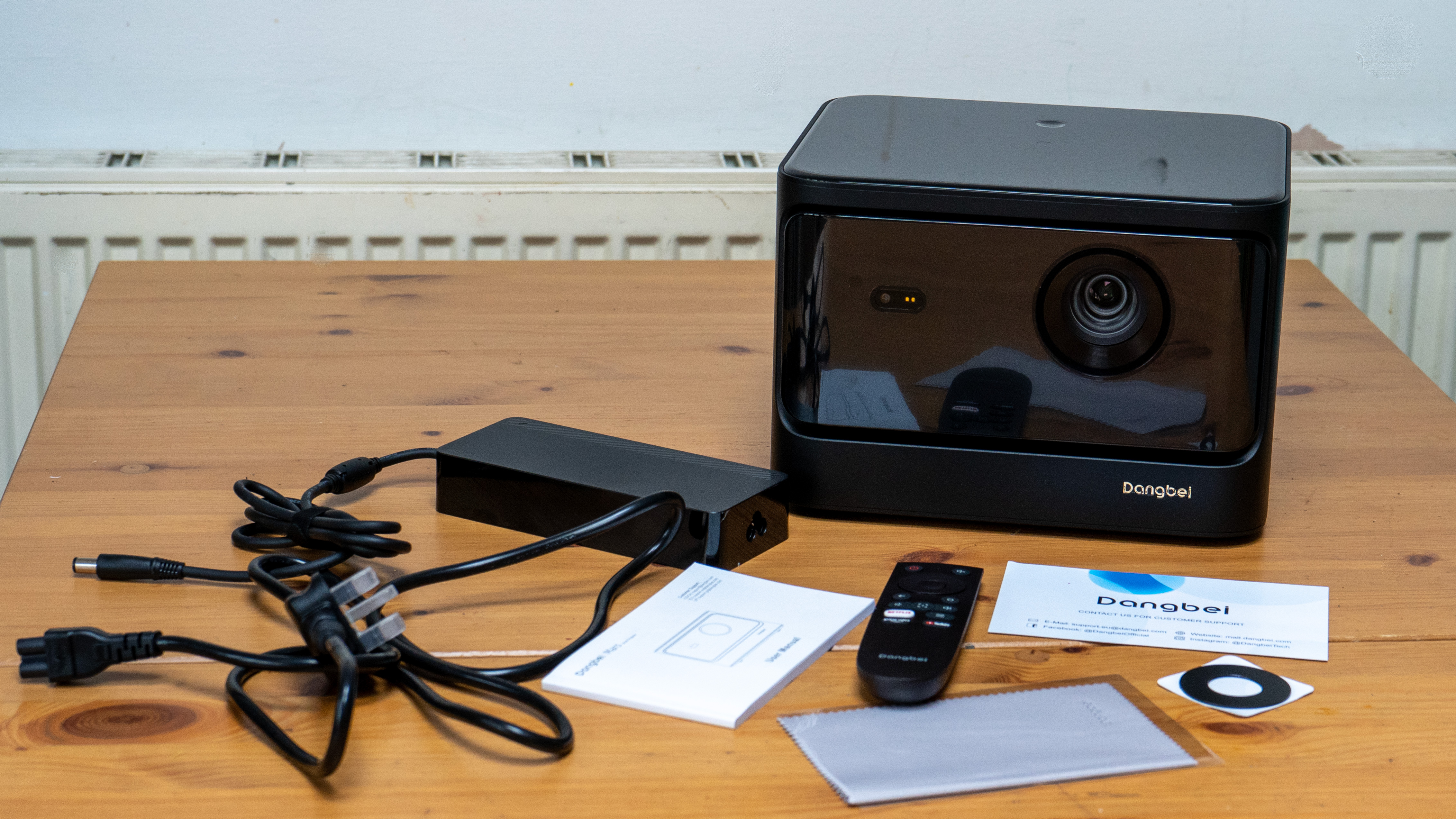
Key features
This is a bright, powerful ALDP (Advanced Laser Phosphor) projector and serving the needs of an entertainment space are its primary purpose, hence the built-in Netflix Prime and YouTube apps (and Wi-Fi or Ethernet connections for them). These are supported by dual 10W Dolby Audio speakers. The picture boasts HDR10.
The Mars's other speciality is moving about, with automated set-up including AI brightness adaptation, autofocus, keystone correction, screen fit and object avoidance, all assisted by a time of flight (ToF) distance sensor. It can project a screen size of up to 180 inches.

Build and handling
If you're putting down close to a four-figure sum, you want the device in question to look the part, and the Dangbei Mars does not disappoint. It is weighty and cuboid with just the right amount of rounding. The top is glossy, save for a power button, as is the front. Its surface is interrupted not only by the large projector's lens but also by the small distance sensor which measures how far the screen is so as to get the best picture.
When powering up the first time, you'll want to make sure you don't do it anywhere too complicated. The projector is able to avoid objects, it says, though not in an environment as complicated as the room we tested in. You will probably need to set up Wi-Fi, and then Netflix etc. which is a lot easier if your phone can see the whole QR code!
The grilles are built into the design, and as well as housing the speaker, the system absorbs air from the left (if you're set behind it) and ejects it – a little warmer – to the right. On the base is a tripod-style thread mount – as close as it comes to any adjustment. You can add a table-top tripod, but it'll need to cope with the weight. This seems odd since the device has keystone correction on offer.
The remote control is reminiscent of many small plastic controllers, such as you'd find with a streaming adapter – it even has a Netflix button. It takes 2 AAA batteries. This opens up extensive menus, with a Linux-powered icon page which is home to the Netflix, Prime, and YouTube apps. It is also the jumping point to two variants of mirror casting, so in theory, you should be able to send a video from your phone.
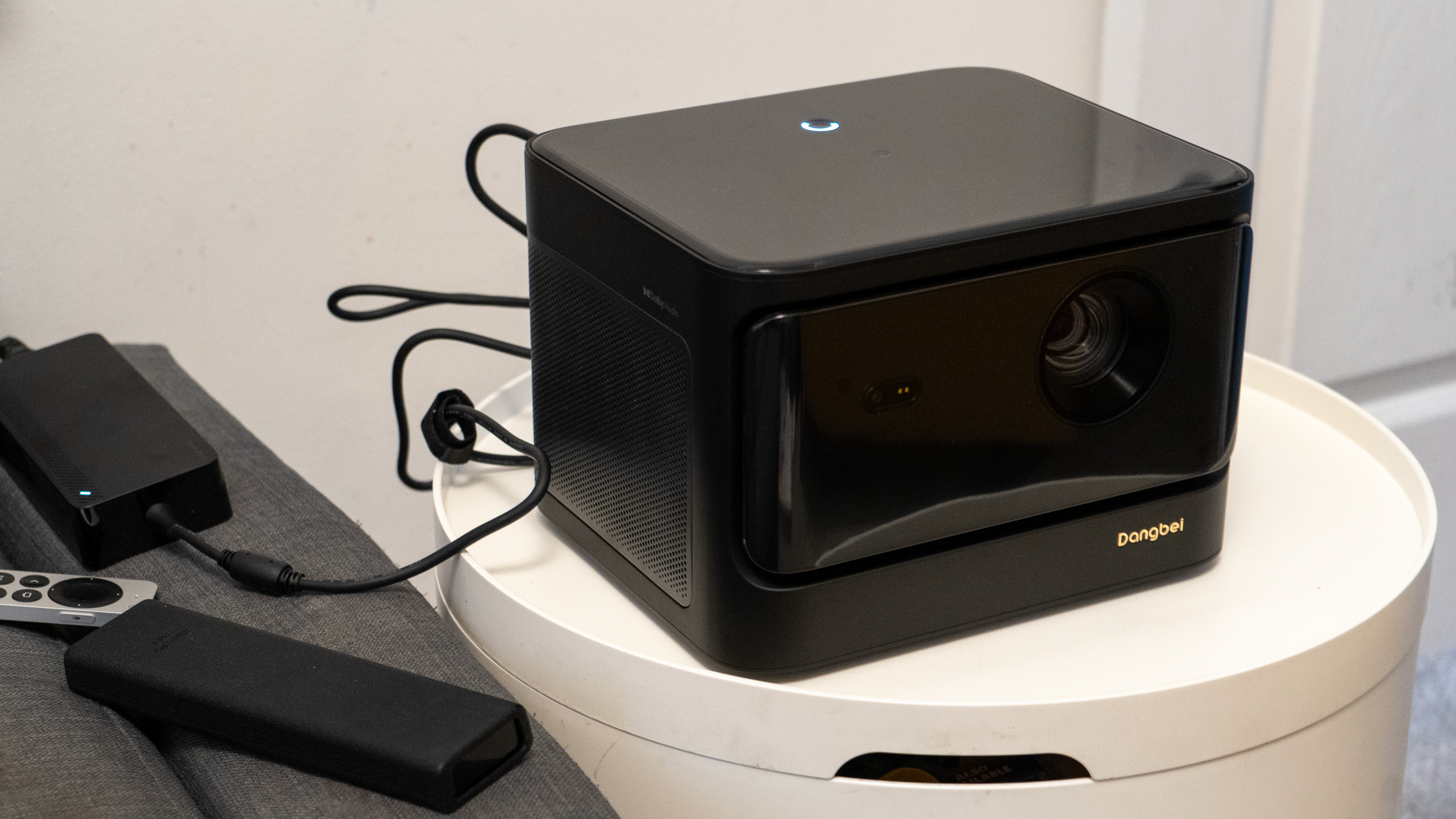
Performance
Navigating setup is reasonably pain-free, though I wouldn't go so far as to say elegant. I'll say, from experience, you shouldn't make things too hard for yourself. Use a clean screen / white(ish) wall at least at first! The projector can flip the image if you want to place it behind a screen, but even when I sat next to it I barely noticed the device's fan – it was extremely unobtrusive compared to other projectors I've tried.
For the most part, the video is stunning. The autofocus makes it sharp – so much so that in the middle of the frame you can almost make out pixels, but not to the point it is jarring. Auto keystone adjustment (in both planes) is impressive too, and can even be set up to be invoked when movement is detected, so you don't even need to resort to the menus when you move the box. That thought of portability does beg the question "Why no handle?" but such is life.
The weak spot in the automation is the object avoidance, designed to avoid furniture and picture frames. It does the job, but can be a touch too aggressive, resulting in a much smaller image than needed, but this is easily disabled.
When viewing video, I occasionally felt I detected the red, green, and blue components of the image when my eyes darted around the screen – not unusual with this technology, sadly.
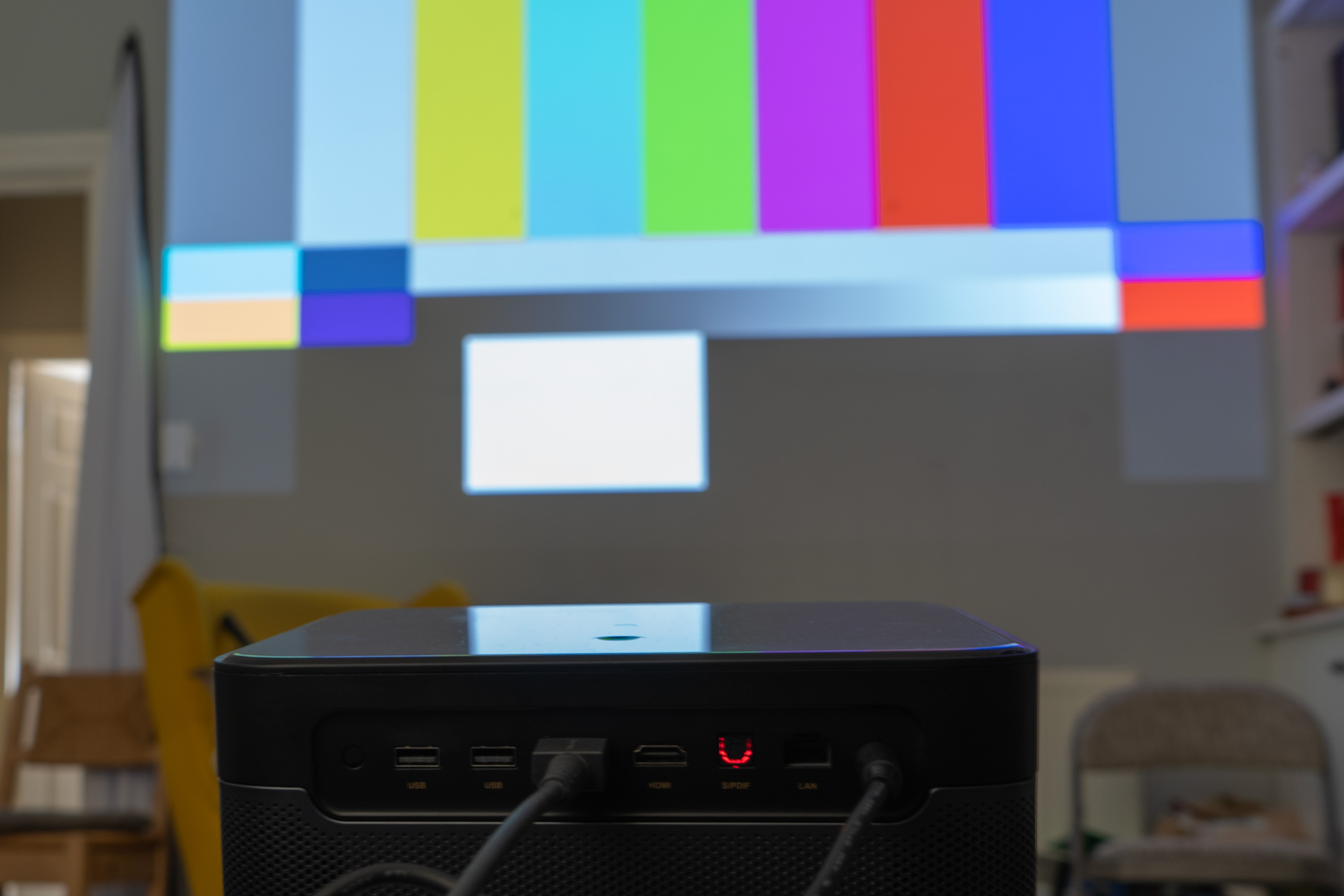
The audio from the device is a good, rounded sound which will fill an average sized room if turned up high enough. There are modes including Music, Cinema, and Sports, and a speaker connector.
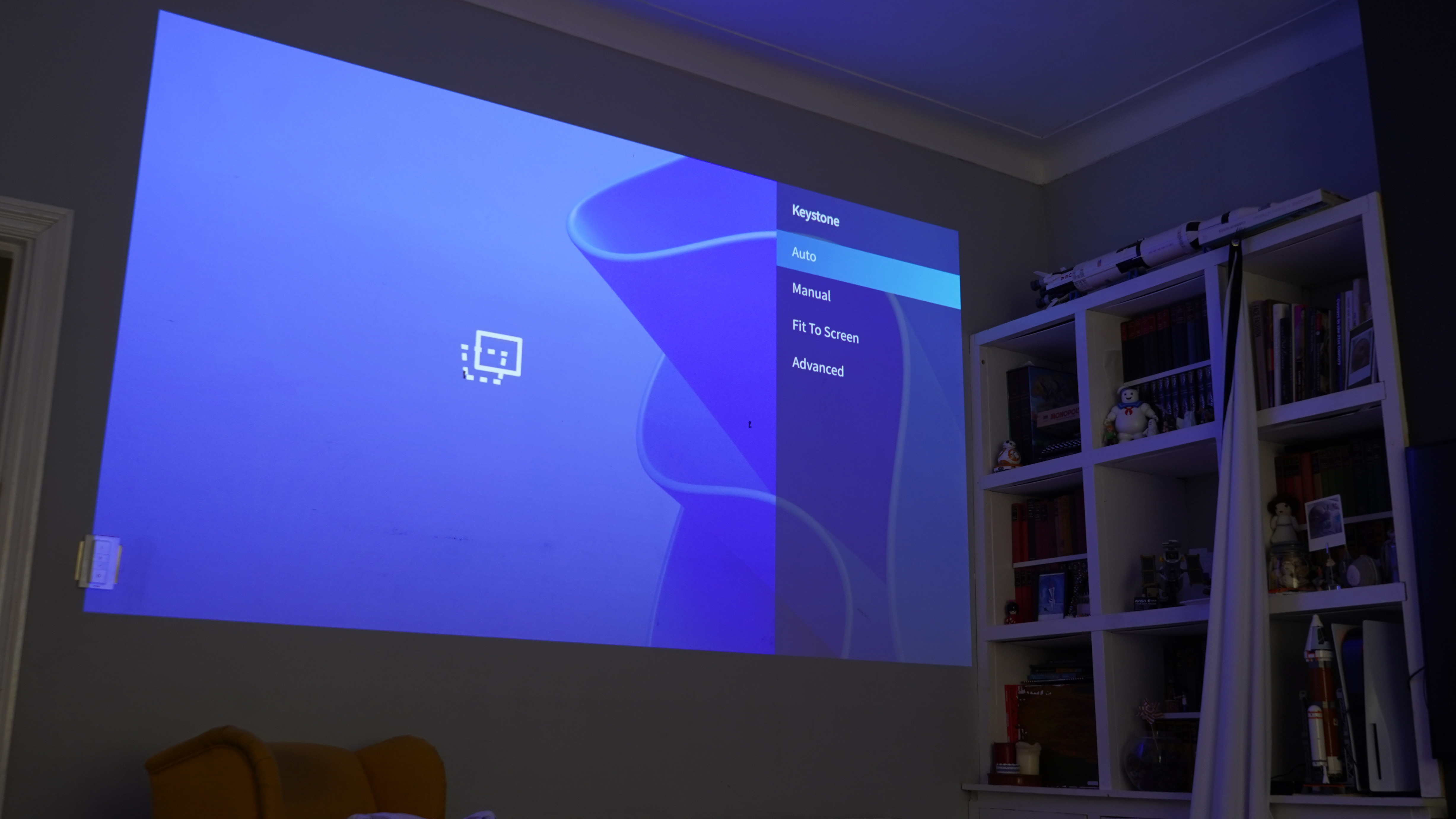
One thing that impressed me about an image subjected to automatic or manual tweaking of the keystone is that there didn't appear to be obvious jaggies; the image processing happens discreetly even when the picture is sharp. You can zoom the image right down to 50%, at which point things probably do lose definition, but within a sensible range it does the business more-or-less imperceptibly.
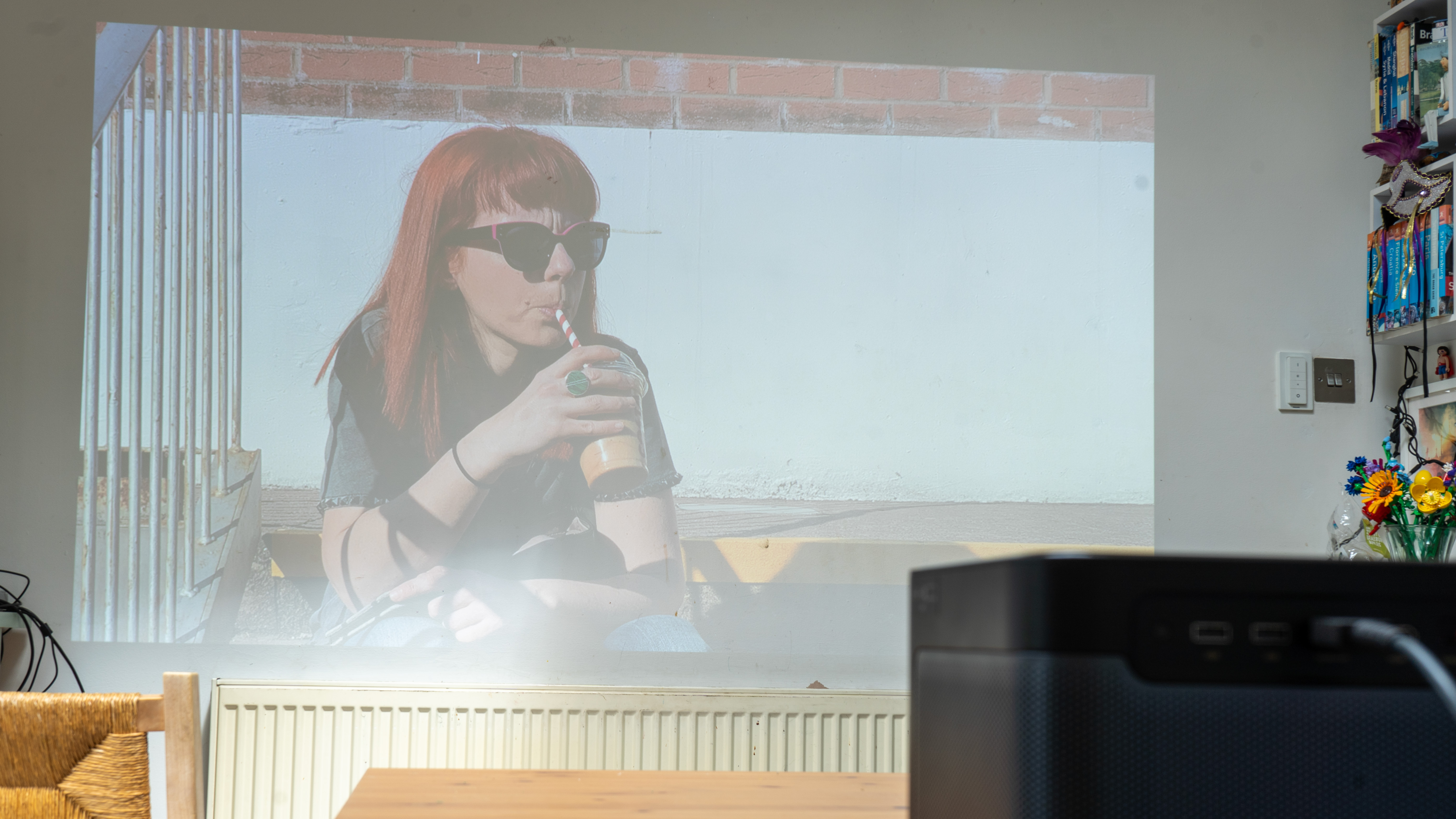
Because I'm a thorough tester, I whiled away a few moments looking at the modern alternative to a slide projector. As an iPhone user, I couldn't cast an image, which was frustrating. The obvious solution was an HDMI adapter for my computer (a Mac) – no problem there, and the pictures looked very good. It is possible software updates will improve matters here, but there are no promises from Dangbei.
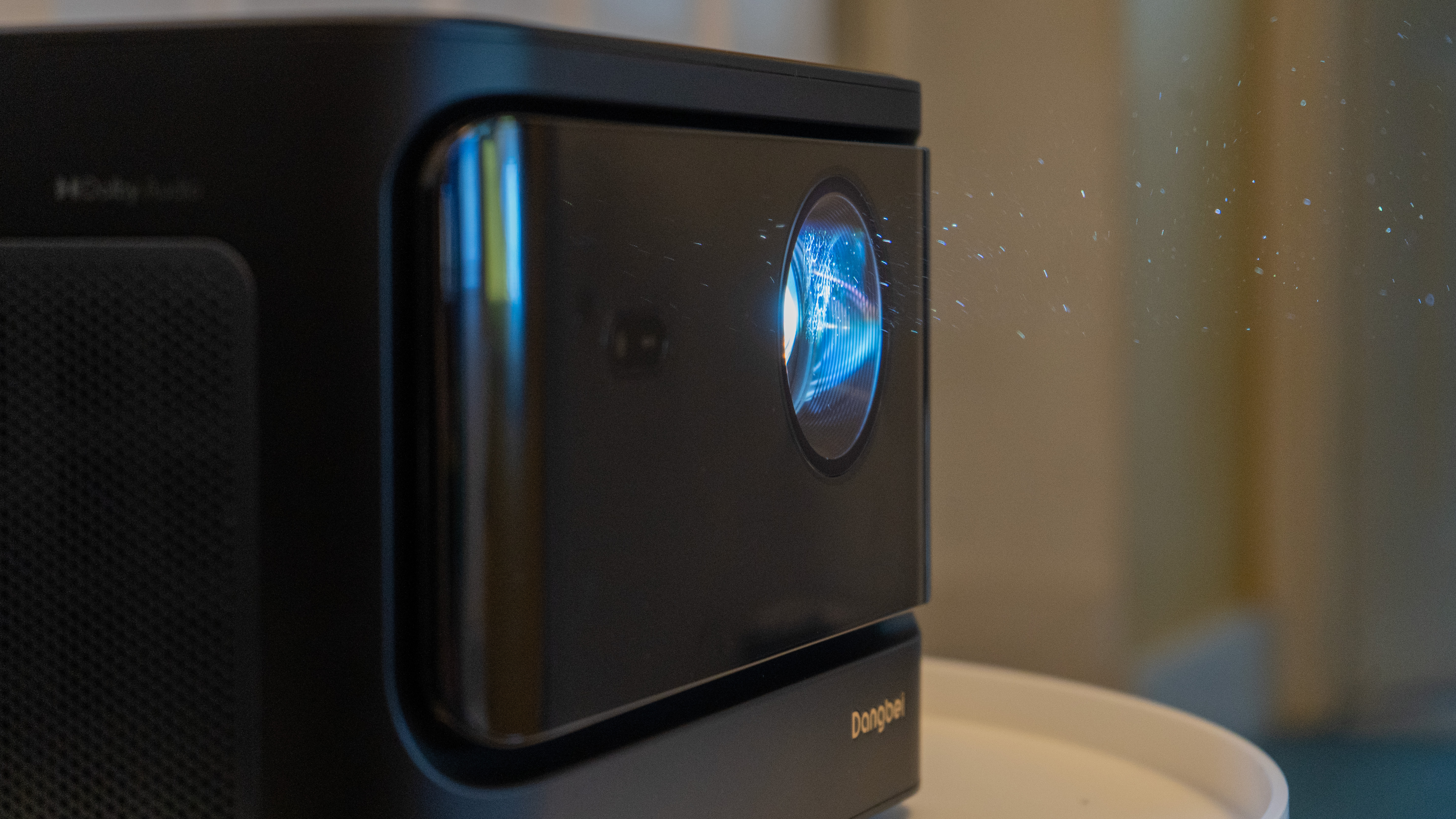
Final verdict
Ultimately the projector has an excellent image (and, remember, I'm reviewing the 1080P version). The audio is solid too, and the device is made easily accessible thanks to the autofocus and keystoning system. Why, then, doesn't it have adjustable feet to point up from the coffee table? Curious.
It's also great to be able to run Netflix without needing any more cables, but for me the apps were a bit hit-and-miss. No Disney or Apple TV+ for a start! Once I'd plugged my review sample into an Apple TV device I suddenly seemed to have a stress-free cinema rather than a very large projection of some compression artefacts.
Nevertheless the good outweighs the quirks here by a long way. It's easy enough to lean the projector back a little with a paperback, but not every projector can then automatically correct the picture on the surface so accurately with so little fuss. The image, the sound, they're all great. The portability, the apps – they could be better, and who knows, perhaps a software update will help with the former.
We can see this device working in an office or a home, but with the meaty speakers, auto-adjustments and high brightness (able to work even without a proper screen) it seems it lends itself to home use – a day in the den, an evening in the garden as a mini home drive-in cinema.
Best projectors for video
Best projection screens
Best HDMI cables







